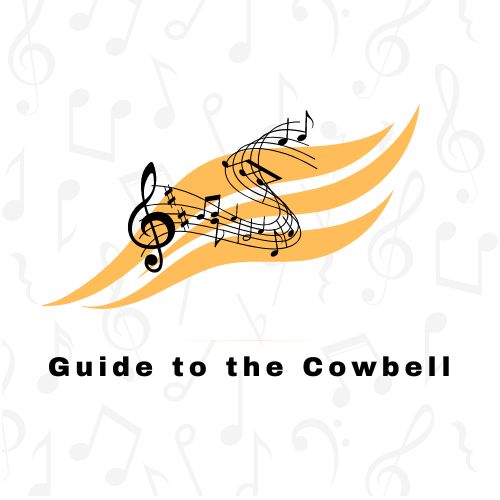Cowbells are hand percussion instruments that originated to freely roaming animals. Initially, the cowbell was used by the herdsmen in order to identify the herd to which the animals belonged. These cowbells were usually placed in the animal’s neck, making the bell ring whenever the animal move. With this, it would also be easy for the herdsman to know the whereabouts of their animals. Although the bells were commonly used in various types of animals, these bells were called cowbells because of their extensive use with cattle.
Aside from using to know the whereabouts of an animal, the cowbell is also used in various styles of music, including salsa and in popular music.
There were two types of cowbells that are used as an instrument in playing music. These were the Clapperless Cowbell and the Tuned Cowbell.
- Clapperless Cowbell: The Clapperless Cowbell is a type of cowbell that plays an essential part in Latin-American go-go music. It is made out of metal and is struck with a stick in order to produce sound. However, it is not too easy to struck this idiophone percussion since it produces modulated tones depending on which part you hit the bell.In other parts of the world, specifically in West Africa, about two to three Clapperless Cowbells were joined togetherin such a way they could still be clashed or struck separately. In Brazil, the cowbells are called agogo bells, while it is named cencerro in Cuban music.
- Tuned Cowbells: Tuned Cowbells, also called Almglocken and Alpine Bells, are bulbous brass bells used to play music. Sometimes, the cowbell is used as a tourist attraction, in classical music, and novelty act in the northern Alps. These cowbells were tuned differently in order to distinguish animals individually. However, commercial sets of cowbells in equal temperament are also available. In comparison to handbells, cowbells retained its clapper, making it noisier. Some notable performers who have included the Tuned Cowbell in the musical palette include Gustav Mahler, John Adams, Roy Harter, Toru Takemitsu, Richard Strauss, Karlheinz Stockhausen, and Joseph Schwantner.
Although cowbells initially appeared in hillbilly music in the 1920s, cowbells recently began to be more notable in popular music. For instance, The Chambers Brothers psychedelic band uses the cowbell in their early pop recording of ‘Time Has Come Today.’ Another example where the cowbell was used was in the song ‘Grazin’ in the Grass’ by Hugh Masekela’s 1968 instrumental. In the 1990s and 2000s, the cowbell was incorporated in other genres of music like in Skinny Puppy’s goth music, ‘Dig It,’ Super Furry Animal’s indie music, ‘Juxtaposed With U,’ and in Dismemberment Plan’s indie music, ‘You are Invited.’
Several more music uses and included the cowbell in some popular songs, including B-52’s ‘Loveshack,’ Pink Floyd’s, ‘Pigs (Three Different Ones),’ Nazareth’s ‘Hair of the Dog,’ and LCD Soundsystem’s ‘Daft Punk Is Playing at My House.’ Among much other music where this instrument was featured was in Gun’s and Roses’ ‘Nightrain,’ Rage Against the Machine’s ‘Freedom,’ Township Rebellion,’ and Cali Swag District’s ‘Teach Me How to Dougie.’
Moreover, the popularity of the cowbell flourished as it became the subject of a live skit parody known as ‘More Cowbell.’ If you had watched the parody skit, you might have encountered Bruce Dickinson saying, “I have a fever, and the only prescription is more cowbell.” This American comedy sketch that was aired on Saturday Night Live in April 2000 fictionalizes the classic rock song by Blue Oyster Cult entitled ‘(Don’t Fear) The Reaper.’While the song actually featured the cowbell instrument, its sound was drowned by other musical instruments. The ‘More Cowbell’ comedy sketch was considered as one of the greatest and best sketches of SNL that was ever made. In fact, it was ranked as number nine by Rolling Stone, an American monthly magazine. As a result of the comedy sketch’s popularity, the phrase ‘More Cowbell’ has become an American catchphrase.
The notable sketch starred Jimmy Fallon as Albert Bouchard, Will Ferrell as Gene Frenkle, Chris Kattan as Buck Dharma, Chris Parnell as Eric Bloom, Horatio Sanz as Joe Bouchard, and ChristopherWalken as the music producer known as ‘The Bruce Dickinson.’

